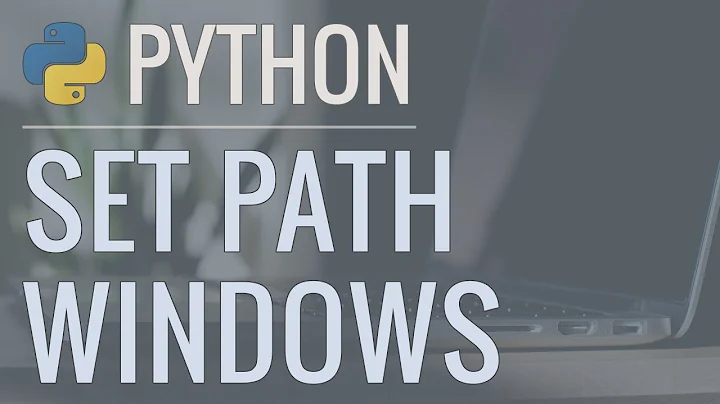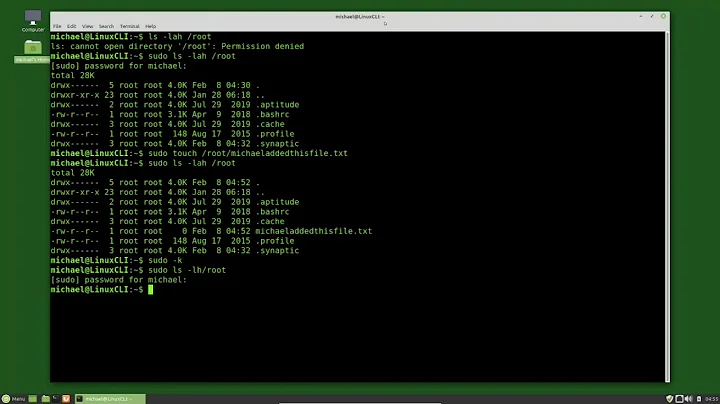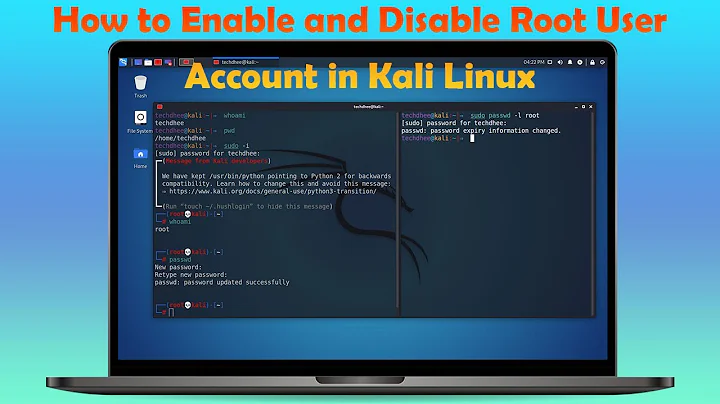How to switch to root user but stay in the same directory
Solution 1
First of all, don't use sudo su. It's not wrong, or dangerous or anything, it's just inelegant and pointless. You are running two separate programs to do a job easily handled by one. If you want to start a shell as root, sudo can do it for you.
If you want to start a login shell (that's what sudo su -) does, use sudo -i. That, however, since it starts a login shell, will take you to root's home directory by default.
To start a regular, non-login shell, you can use sudo -s. That will start a root shell for you and keep you in the directory you ran it from:
terdon@tpad ~ $ pwd
/home/terdon
terdon@tpad ~ $ sudo -i ## changes directory
[root@tpad ~]# pwd
/root
[root@tpad ~]# logout
terdon@tpad ~ $ sudo -s ## doesn't change directory
[root@tpad terdon]# pwd
/home/terdon
So, the way to start a root shell and stay in the same directory is sudo -s.
Solution 2
This is very simple. Just type
sudo su
instead of
sudo su - root
This will keep you in same folder as root.
Related videos on Youtube
Hammad Hassan
I am working in Machine Learning from 2015. I worked on traditional ML algorithms as well as on Deep Neural Networks. The most enthusiastic part of my expertise includes using the latest transformer-based models, launched by Google and Facebook. A short summary of my technical skill set is as: • 6+ years experience in ML / NLP / Deep Learning • 4+ years hands-on experience with Python in ML • 3+ years hands-on experience using AWS for building and deploying ML models • 2 years hands-on experience with Java in ML (Stanford CoreNLP) • scikit-learn • pytorch • transformer • numpy / pandas • Spacy / NLTK • SQL • Docker • MatPlotLib I am a self motivated person and learning following stuff now a days: • Big Data with Apache Spark and Python • PowerBI
Updated on September 18, 2022Comments
-
Hammad Hassan over 1 year
I recently switched to Ubuntu and I have observed one thing when I use the following command to switch to root user
sudo su - rootIt takes me directly to root's home (
/root), so I lose my place in the filesystem (the directory where I executed this command). Is there any way to switch to root without losing the current directory? -
 terdon about 7 yearsThis isn't wrong, I mean it does work, but using
terdon about 7 yearsThis isn't wrong, I mean it does work, but usingsudo sudoesn't make much sense. That's whatsudo -sis for. I've never understood why so many Ubuntu tutorials suggestsudo su. -
Barmar about 7 years@terdon I've also never understood it, but it seems to be widespread among all Linux users. Maybe the alliteration makes it more memorable.
-
Barmar about 7 yearsThe problem may be that
sudo -sdoesn't run the target user's profile because it's not a login shell. So perhaps the real question is whether there's a way to get a login shell withsudo, but without changing directory. Probably not. -
 terdon about 7 years@Barmar personally, I've only seen it in the Ubuntu world. Since most Linux systems have a normal root account by default, when needing a shell you'd do
terdon about 7 years@Barmar personally, I've only seen it in the Ubuntu world. Since most Linux systems have a normal root account by default, when needing a shell you'd dosu(alone, nosudo). Because, however, Ubuntu disables the root account by default, thesudo suhas come quite naturally. it is also, apparently, the case in some corners of the UNIX world as well, but in Linux, I've only seen it in Ubuntu. -
 terdon about 7 years@Barmar no, but
terdon about 7 years@Barmar no, butsudo -idoes. I used-ssince the OP didn't want a login shell (didn't want to move to$HOME). If you want a login shell, usesudo -i. I've posted a comparison of the environments ofsudo -i,su -,sudo -sandsuin my question here if you want to have a look. -
Barmar about 7 years@terdon I've seen it for decades, I'm not even sure what distributions we were using. We use Debian in my current company, and my coworkers use it.
-
Hammad Hassan about 7 yearsJust now I had a very bad experience with this command, sudo -s. Even it does not change the directory but it did not gave me full root access. Some of my files were present in a directory but I was unable to see them as normal user and as root user in this way (sudo -s). Then I used the old way (sudo su - root) and went to the directory and my files now were visible to me. Why sudo -s have given me restricted access?
-
 terdon about 7 years@HammadHassan there is no way what you describe could have happened. There must be something else going on. What do you mean "unable to see" the files? Do you maybe mean "unable to read the files"? Are you maybe using encryption?
terdon about 7 years@HammadHassan there is no way what you describe could have happened. There must be something else going on. What do you mean "unable to see" the files? Do you maybe mean "unable to read the files"? Are you maybe using encryption? -
Hammad Hassan about 7 years"unable to see" means simple command "ls". It did not showed me my files. No encryption at all. My files are simple. And this is really happened.
-
 terdon about 7 years@HammadHassan that makes no sense. If
terdon about 7 years@HammadHassan that makes no sense. Iflsshows no files, then there are no files in the current directory. Your user or the permissions of the files can't change that. Come into the main chat room, if you like, and we can try and figure this out. -
Fadi over 2 years@HammadHassan you can't see hidden files without passing any flags to
ls







